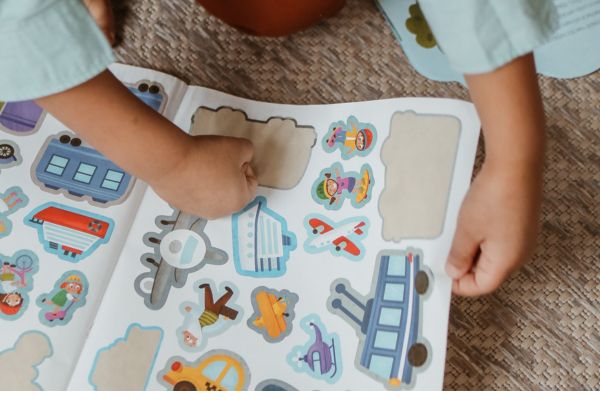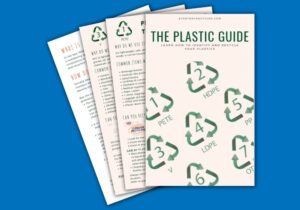It’s Easter time, my favorite time of the year. However, just like many other holidays or celebrations, Easter creates a lot of waste. There’s the packaging from all those chocolate Easter eggs, gift wrapping, and packaging. Plus, all the decorations and plastic eggs for the Easter egg hunt.
Packaging during Easter celebrations has environmental implications worldwide, and these statistics highlight the extent of the issue.
- In the UK alone, it’s estimated that over 8,000 tonnes of Easter packaging is discarded annually, contributing to the nation’s growing waste crisis.
- Meanwhile, Americans spend over $20 billion on Easter-related items each year, resulting in millions of tons of plastic and paper waste. Plastic Easter eggs alone account for approximately 500 million products sold annually.
- In Canada, the volume of packaging waste generated during Easter festivities adds to the country’s mounting environmental challenges.
This surge in packaging waste exacerbates landfill overflow and marine pollution, emphasizing the urgent need for more sustainable packaging practices and consumer behavior changes during Easter celebrations.
Fortunately, there are lots of ways you can reduce your impact at Easter. You could try a new recipe, like making your own hot cross buns or chocolate Easter eggs. Or why not make your own colored or painted Easter eggs? There are also plenty of options for your outdoor Easter Egg Hunt.
While you are planning all your fun activities, let us help you recycle your Easter egg waste properly. As we always say around here, reducing and reusing are our first goals.
Here are some tips to help you.
Quick Navigation
Reduce and Reuse at Easter
Here are some tips to help you reduce and reuse during the Easter holiday.
- When buying Easter eggs and other gifts, look for products that have the least amount of packaging.
- Loose Easter eggs are a great option as you can recycle the aluminum foil.
- The plastic packaging around Easter eggs is not always marked with a plastic number 1 to 7, so it’s hard to tell if it’s recyclable. Even though often made from PET, a recyclable plastic, it’s best to avoid this plastic packaging if you can.
- Save any boxes, baskets, or packaging to repurpose next year. You can even reuse any plastic packaging, like the dozen egg tray packets, and refill them with more loose eggs.
- Why not make your own Easter eggs by painting boiled eggs? See below.
How to Recycle Your Easter Waste
Easter egg foil
Roll your Easter egg foil into a ball until it is about the size of a baseball or cricket ball. Then place it into your curbside recycling bin. If there’s any chocolate on the foil, then give it a quick wash and let it dry before you roll it into the ball.
You could even make a game of this and see who can collect the most aluminum foil. To learn more, why not take a look at our post Is Aluminium Foil Recyclable?
Chocolate or Sweat Wrappers
During Easter, various types of sweets are commonly consumed and with that come many different types of wrappers, including those made of foil, plastic, and paper.
Foil wrappers can be recycled, as discussed in detail above. However, plastic wrappers, commonly used for individually wrapped chocolates or candies, pose challenges for recycling due to their non-recyclable nature. If you are fortunate to have access to a local soft plastic recycling program, these may be accepted for recycling.
Although paper wrappers are more recyclable than foil or plastic, they may contain coatings or laminations that hinder recycling. However, some paper wrappers can be recycled if they are free from contaminants such as food residue or metallic inks. A few companies are shifting to using more paper than plastic, which is a good sign. Keep your eye out for these and support them.
Overall, while some sweet wrappers may be recyclable, it’s essential to check local recycling guidelines and opt for materials with minimal environmental impact whenever possible.
Cardboard packaging
Flatten any cardboard boxes and place them into your curbside recycling bin along with your regular paper and cardboard. If it’s pretty and in good condition, why not keep it to reuse next year?
Hard Plastic packaging
The hard plastic packaging around Easter eggs is often not labeled. Fortunately, it is commonly made from PET, or plastic number #1, the same plastic in plastic water bottles.
Check if it’s rigid plastic by doing the scrunch test. If it bounces back into shape, then it’s rigid plastic. Rigid plastic can be placed in your curbside recycling bin. If it scrunches up into a ball, it is soft plastic and must be recycled at local soft plastic recycling drop-off points. There are many of these in local supermarkets. Learn more below.
Baskets and Bags
Gift Baskets and Bags
Gift baskets are usually made from non-recyclable materials. The materials vary greatly, but those made from more organic materials like cane are always better. If you are gifted a gift basket, it is great for reuse. Try to keep it in a safe place until next Easter so it is in good condition for your gifts. And remember, it definitely doesn’t belong in your recycling bin.
Gift bags, despite being made of paper or cardboard materials, often cannot be recycled due to the presence of non-recyclable components such as glitter, foil, or plastic coatings. These additional embellishments render the gift bags unsuitable for recycling processes and can lead to contamination.
Plus, the handles and other non-paper elements attached to the gift bags further complicate recycling efforts. As a result, gift bags are destined for landfills, contributing to environmental waste and pollution.
Your best option is to avoid these bags altogether, or better yet, why not make your own? It’s a great project if you have kids. You can buy some recycled paper bags and decorate them.
Gift Wrapping
A lot of gift wrapping is, in fact, made from plastic, not paper. You can generally tell the difference by doing a scrunch test or by trying to tear it. Find out How To Tell If Your Wrapping Paper Is Recyclable. It can be hard to do this at the shop, so try checking the label to see what it says it is made from.
Choose plain paper or cardboard gift wrap that does not contain non-recyclable elements such as foil, ribbons, or glitter. This helps ensure that the wrapping can be recycled efficiently.
Selecting wrapping paper made from recycled materials is an even better choice.

Hot Cross bun bags or other soft plastics
If the plastic can be scrunched and will not return to its original shape, it can be recycled with your soft plastics. Collect this plastic, along with any plastic bags or similar packaging, and take it to your local drop-off location. You will find links for locating your soft plastic recycling drop-off points in our article on soft plastic recycling.
Want a fun and convenient way to collect your soft plastics at Easter? Why not try The Shrinker!
This clever tool by Wholly Shrink helps you collect and compress your soft plastics, making storage and recycling easier. Highly recommended!
Get yours today.
Activities to Make Easter Eco-Friendly
There are many things you can do to make Easter fun but less impactful. Here are just a few ideas:
Options for your Easter egg hunt
There are some great options for hosting a great Easter egg hunt without the plastic waste. Here are our favorites:
- Use wooden eggs like the ones below.
- Make your own eggs by painting real eggs or using craft supplies to make eggs out of felt or other materials.
- Use string to lead the children to their prize, that way, nothing is left in the garden.
How to Color Your Own Easter Eggs
- Hard boil your eggs
- Cool the eggs in cold water
- Mix up your dye (1 cup boiling water, 2 tsp vinegar, and 2 tsp of food coloring. This can vary depending on the intensity of the color you want.
- Dip the egg into the dye mixture for up to 5 minutes
- Here is a great video on how to create some great patterns on those eggs.
Lots of fun to be had.
Oh, and don’t forget, if you use the aluminum foil idea, wash it off, roll it in a ball, and put it into the curbside recycling bin.
Wrap Up
Whether you have an indoor Easter egg hunt, go searching for Google Easter Eggs, or dye your own eggs, we hope you all have an Eggs-ellent Easter.
Do what you can to reduce your impact, and be sure to recycle all that packaging.
Happy Easter, Everyone!

















